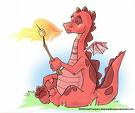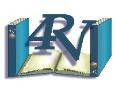
Another intrinsic area to keep in mind in your worldbuilding is your food and water source. Something to keep in mind in your world is the more complex the infrastructure and the larger the settlement, the harder it is to feed the people of your realm. Keep in mind you will need a transportation system for taking needed supplies from the area where they are grown or raised to the area where the people will make use of them.
Agriculture refers to all manner of farming and ranching. Both of these areas are very much at the mercy of weather and the elements. The climate may be typically one way, but any adverse conditions will play havoc with the outcome of your food source – this may have some potential bearing on your story line. Think how late rains, flood, hurricane, droughts, hail storms, early freezes all can influence whether enough food has been produced for a family, local community or wherever the crops may be sold. This basic necessity may have some role influencing an element within your storyline.
The availability of a good transportation system may influence the process of feeding your community. Is it a small or large portion of the food supply brought in from other areas? In a setting where the community is totally dependant on the local crops feeding them, a couple of bad years could wipe out the entire community. If, for example, you have a sci-fi setting, a poor crop year could wipe out the population of the community or they may be saved by the timely visit of a transport vessel bringing food and medical supplies.
Crops are grown for two purposes -- to feed humans and to feed livestock which will, in turn, feed humans. Large scale farming (anything beyond subsistence of a single family or small village group) means the crops must have a way to get to market.
Livestock can be thought of us food for the community; however, in a time of drought will the community want to share the water supply on the animals? This may be a concern for the people of your realm.
Hybrids of crop types are not a modern day invention. The earliest farmers quickly saw the use for naturally occurring hybrids offering more lobes per plant for grains, and cultivated those. In fact, the first cultivated plants were carefully selected and grown for better food.
Be careful to double check the crops you intend to raise grow in the type of climate you've created. Also be aware that not all crops were planted in the spring. Winter wheat is planted in the fall, and harvested earlier in the next year. This allows for the growth of two crops in a normal season, but it is risky since a late frost, dry spring, or a number of other uncontrollable factors can ruin the crop.
Environment also dictates whether or not people will have herd animals. Jungle tribes do not. Even if there were some animal they could tame (say wild boars), it would be nearly impossible to keep track of them in the thick growth. At best, the people may have some half tame pigs and perhaps a few goats or sheep in the villages, but large scale herding of any native animal is unlikely to happen.
Horses are still work animals in any ranch setting as well as in places like traditional Amish communities. However, the closer you come to large cities, the more likely they are to make the transition to pets and luxury animals.
Pets are another matter. A group of people living at subsistence level is not going to have pets just to have little furry friends. However, remember that cats and dogs started as workmates, not just companions. Cats, though not in the same class as dogs for workers, were especially good at guarding the precious grain stores which might keep a village alive all winter. They hunted rodents and other small vermin. Dogs, of course, worked well as shepherds and guards.
How can you work something unusual into your worldbuilding? Are there certain foods only avalable to people of a certain class? Are there animals which can only be owned by certain types of people? This is often true in magic-based stories. In the real world, royalty often owned odd animals as a sign of their power. What will the types of pets a household may have tell you about the family? Where will these types of details lead your story and your reader's understandings of the ways of your world?
Like this post? Tweet It! Go ahead, you know you want to!
We just want to help you
2 months ago


























4 comments:
Like the way you point out that imaginary worlds have to support the characters' lives. In too many published fantasies, the characters live in a "adventure vacuum".
Great information. I love the picture.
Karen Cioffi
Hi Kay and Karen! Thank you so much for stopping by. I think one of the things that makes your realm more credible and easy for the reader to accept and become involved with is in the details - take Harry Potter for instance...one area JK Rowling loves to indulge us in is describing foods from her realm that entice and intrigue the readers. Sports are as natural and competitive in her wizzarding world as our world and she even invented a sport to set her world apart. You can really have fun with taking something we take for granted in our world and making it thoroughly intriguing by using a little imagination to draw your readers in.
~Nancy
Interesting article. I never thought about how much work creating another world involves. Authors like Rowling and others do it so effortlessly it seems natural. Thanks.
Bev
Post a Comment